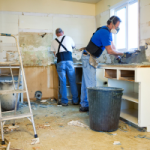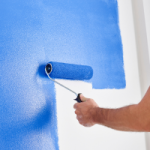What questions are your clients asking us right now about depreciation?
First up, you might wonder why they are asking us and not you. We might be a bit easier to get through to, especially at this time of year, and most clients know we are happy to have a chat about depreciation related stuff.
We’ve been doing this for 22 years now, so there is a lot of collective knowledge here. Residential, commercial, even farms, we’ve done them all. Do you have a client you suspect might need a Depreciation Schedule and/or have a few questions? You can refer them here before they pester you.
June is when people call us up and sound us out about things before they go and see their accountant. It’s usually the same questions every June. Isn’t it good that we deal with them before they see you.
So what questions are we getting right now?
One common question is how quickly can you do a depreciation schedule? If we’re inspecting the property, we’ll have the schedule ready for you in just 10 working days from the inspection. If we don’t need to inspect, it will be even faster.
Other questions involve prospective Depreciation Schedules, or questions that revolve around Depreciation Schedules we have completed sometimes years ago. Did you know we update schedules free of charge? Saves you having to do it.
And there have been a few questions recently about how to treat demolished Capital Works.
Key Points:
- There is depreciation to claim in every residential property built after September 1987. And in recent renovations done to houses of any age.
- We can put a written-down value on Capital Works that are disposed of so your clients can claim it – including knock down/rebuild projects.
- Clients are often confused about the treatment of repairs vs improvements.
- Claiming special levies depends on the nature of the work and how long your client has been renting out the property.
If you have a client we can help with a Depreciation Schedule, please use your booking link, email affiliates@depreciator.com.au, or give our friendly team a call on 1300660033 for an obligation-free quote.
 There can be a lot of depreciation in older properties.
There can be a lot of depreciation in older properties.
Every single day, at least one person who has been sitting on an older rental property for a few years but not claimed depreciation calls us. It’s clearly something that has been on their mind. Perhaps it’s that thing they think about when they wake up at 3am – the lost opportunity.
We’ve written about older properties before here.
In short, there is depreciation to claim in every residential property built after September 1987. Sure, in a very modest early 90s house, there might only be $1,500 per year to claim. But that could run for another 10 years, so we think that’s worth claiming. It’s just sitting there forlornly waiting to be picked up.
And what about renovations? Recent renovations done to houses of any age can be depreciated regardless of who did them.
That old terrace house your client rents out? It will have been renovated. And if it happened in the last 20 years or so there could easily be $5,000 per year sitting there – most decent renos cost around $200K.
Queenslanders? Same thing. They get lifted and moved around and built under and then renovated. Lot’s of depreciation there.
We can tell from photos roughly how much depreciation might be in a reno and whether it’s worth looking at getting a Depreciation Schedule on it. We’ve written here about renos previously.
 Disposal of Capital Works.
Disposal of Capital Works.
There is a flip side to renos and it’s something that can give your clients a nice immediate deduction – disposal of Capital Works. It’s something that we bring up with clients, but we bet nobody else does.
A typical scenario is a new kitchen or bathroom. The client has been renting out, say, a 90s property for a couple years and they decide to put in a new kitchen and bathroom to put it into a new rental bracket. They keep their reno costs and depreciate the new works. That’s easy. You can take care of that, or if we already have a Depreciation Schedule running for that property, we’ll amend it.
But what about the kitchen and bathroom that were disposed of? There is money there and it’s a pity for it to go into a skip and be forgotten about. It’s not hard for us to put a written-down value on Capital Works that are disposed of so you can claim it. Maybe it will only be a few thousand dollars, but again it’s worth claiming.
And what about knock down and rebuilds? Let’s say that client with the 90s house gets carried away and decides to bowl it over and build a new rental? It’s not an unusual scenario.
That 90s house could have another 10 years of value left in it. It might have cost $70K to build. That could mean there is at least $15,000 sitting there when it gets demolished. Now, that’s a lot of money to not claim. It’s not hard for us to put a WDV on Capital Works provided people get us involved before the heavy machinery shows up.
 Repairs.
Repairs.
By far the question we get asked most is the treatment of ‘repairs’. It’s a daily thing – hourly toward the end of June.
And that’s despite the fact that we email clients often with some general guidelines. We’ve also touched on it in our affiliate emails, most recently here.
We ask people two things when they call us about repairs: what did you do and how long have you been renting out the property?
You would do the same thing.
We tell them the ATO’s definition of repairs which is, roughly speaking, ‘to restore something to the condition it was in when YOU started to rent out the property.’
If a client has, say, replaced a faulty stove rather than repairing it, the new stove needs to be depreciated. Even if the old one could not be repaired. If a new Asset is added to a property, it needs to be depreciated. That’s nice and clear.
Things get a bit muddy when it comes to work like painting, though. Many clients think that if the paint is shabby and they spend $4,000 getting the property repainted, it must be a repair. Sure, it could be, but only if they have been renting it out for some years and the paint was in good order before they started to rent it out. Otherwise they will be making the property better than it was and they are in improvement territory – 2.5% p.a.
 Special Levies.
Special Levies.
We’ve written a few times about Special Levies, most recently here. So you would know how to treat them. Your clients don’t, though.
They call us often to seek confirmation that their Special Levy can be treated as an immediate deduction. They assume it can, but often it can’t. And that disappoints them, especially when Special Levies are often over $10K.
There are two questions we ask people when they seek our opinion on Special Levies: what was the nature of the work, and how long have they been renting out the property.
Nearly all Special Levies are imposed because of problems with the building, so it’s best to think of them in the same way you look at repairs. Leaking roofs are a common one, as is concrete cancer and waterproofing fails around windows.
If the fault that needs fixing existed before the client started to rent out the property, it’s not a repair. That’s because they are improving the condition of the building relative to what it was when they started to rent out the property. Simple.
We have had a few clients who lived in their property for some years and started to rent it out when the work financed by the Special Levy started. They thought this meant they could claim that work as an expense because their property was being rented out, despite those works being discussed in strata minutes for years prior. We explain gently that the ATO are onto that tactic.
 Enquire now for a property-specific assessment
Enquire now for a property-specific assessment
Has this article reminded you about a client’s investment property? Residential properties, commercial properties, even farms, we do them all.
If you want us to talk to a client about a Depreciation Schedule, make a no-obligation enquiry and rely on our 20-plus years of experience in estimating depreciation returns.




